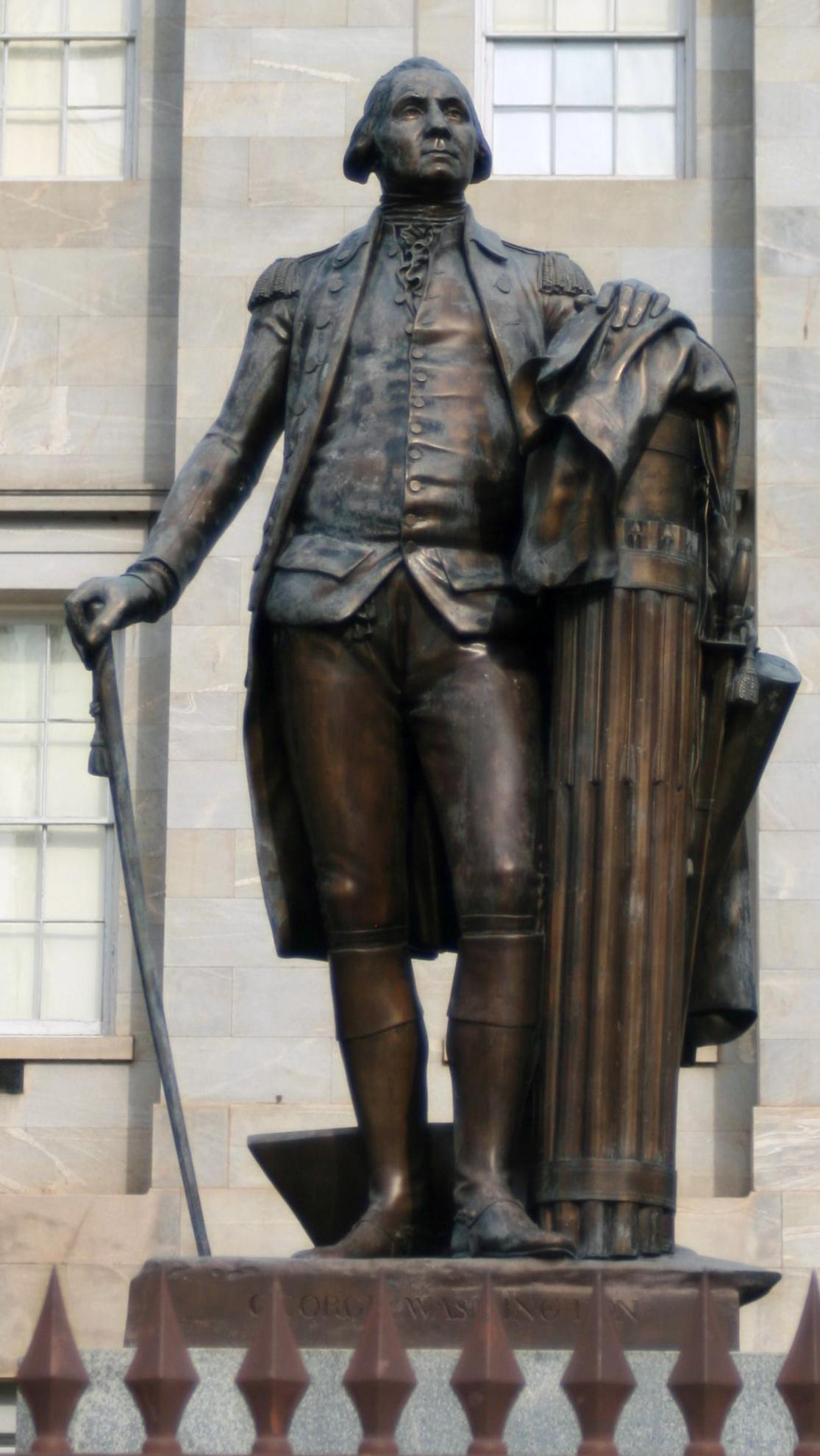by CLC Staff
Standing on the grounds of our state capitol in Raleigh facing south is a life-sized statue of George Washington, who we honor today along with the 46 other men who have ascended to the highest office in the land. The bronze figure, by French sculptor Jean-Antoine Houdon, quietly tells a remarkable story that eclipses all the mythology that famously surrounds our nation’s first president.
The year was 1783. Under the command of General Washington, the rag-tag Continental Army had defeated the British, finally securing American independence. In gratitude and admiration, many called on America’s first hero to become America’s first king.
But Washington turned them down. In December, he resigned his commission in a letter to Congress: “Having now finished the work assigned to me, I retire from the great theatre of Action; and bidding an Affectionate farewell to this August body under whose orders I have so long acted, I here offer my Commission, and take my leave of all the employments of public life.”

In his biography of Washington, Joseph Ellis underscores the truly exceptional character of Washington’s act: “Oliver Cromwell had not surrendered power after the English Revolution. Napoleon, Lenin, Mao, and Castro did not step aside to leave their respective revolutionary settlements to others in subsequent centuries. … Whereas Cromwell and later Napoleon made themselves synonymous with the revolution in order to justify the assumption of dictatorial power, Washington made himself synonymous with the American Revolution in order to declare that it was incompatible with dictatorial power.”
When England’s King George III was told what the celebrated American general planned to do, he said that history would consider Washington “the greatest man in the world.”
Houdon’s statue depicts Washington as both a soldier and a citizen, dressed in his Continental army uniform and holding a walking cane in his right hand, a sign of his life as a civilian. To his left and behind him is a farmer’s plowshare. Washington’s left hand rests on a fasces, a bundle of rods that is an ancient symbol of authority. The sculptor included thirteen rods in the bundle, alluding to the original thirteen colonies.
These objects portray Washington as a modern-day Cincinnatus, a farmer and general who — after leading the Roman army to victory — also relinquished his power and retired to his farm to live a peaceful life.
In 458 BC, Lucius Titus Quinctius Cincinnatus was plowing his fields on a farm outside Rome when messengers arrived to tell him that he had been named dictator to defend the city against an invading army. Leaving his plow behind in the field, Cincinnatus took up the supreme command and went on to defeat Rome’s enemies in just 16 days of battle. But Cincinnatus chose to hold power only as long as was necessary to deliver his country to peace; like General Washington would do more than a thousand years later, he then resigned his command and returned home to work on his small farm.
On this Presidents’ Day, George Washington still stands as shining example of the citizen-patriot. He rose to the occasion when his beleaguered nation called — and then, foregoing all vainglory and power, retired to his former station when his country’s good fortune had been secured.
Presidents North Carolina Gave the Nation
George Washington isn’t the only president you’ll find commemorated on the grounds of the State Capitol. Facing east towards Wilmington Street are Andrew Jackson of Union County (in office 1829 – 1837), Andrew Johnson of Wake County (in office 1865 – 1869), and James K. Polk of Mecklenburg County (in office 1845 – 1849) — collectively known as the “Presidents North Carolina Gave the Nation.” This sculpture, created by the renowned American sculptor Charles Keck, showcase Keck’s expertise in statuary and relief sculpture, including military and presidential monuments, busts, and memorials. Jackson’s exact location of birth is unknown, but it was somewhere along the North-South Carolina border.
The monument’s central feature is a shield emblazoned with stars and stripes, flanked by Polk, who holds a map, and Andrew Johnson holding the Constitution. Behind them, Jackson stands tall on his horse. In 1948, President Truman delivered an address at the dedication ceremony of “Three Presidents,” which was unveiled by the descendants of each president.
Photo at top: “Presidents North Carolina Gave the Nation” by sculptor Charles Keck.



